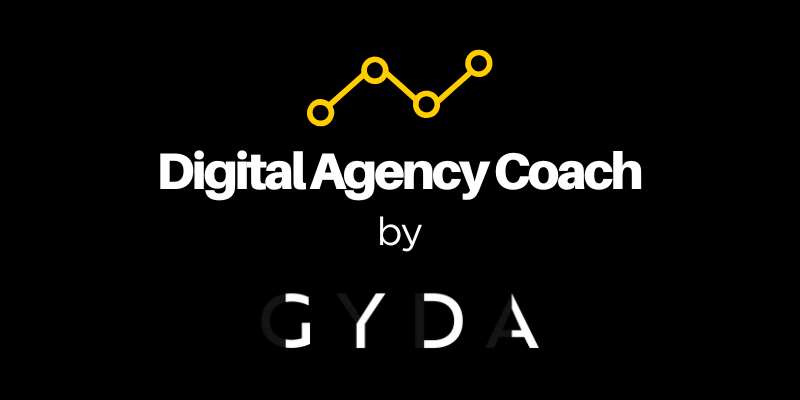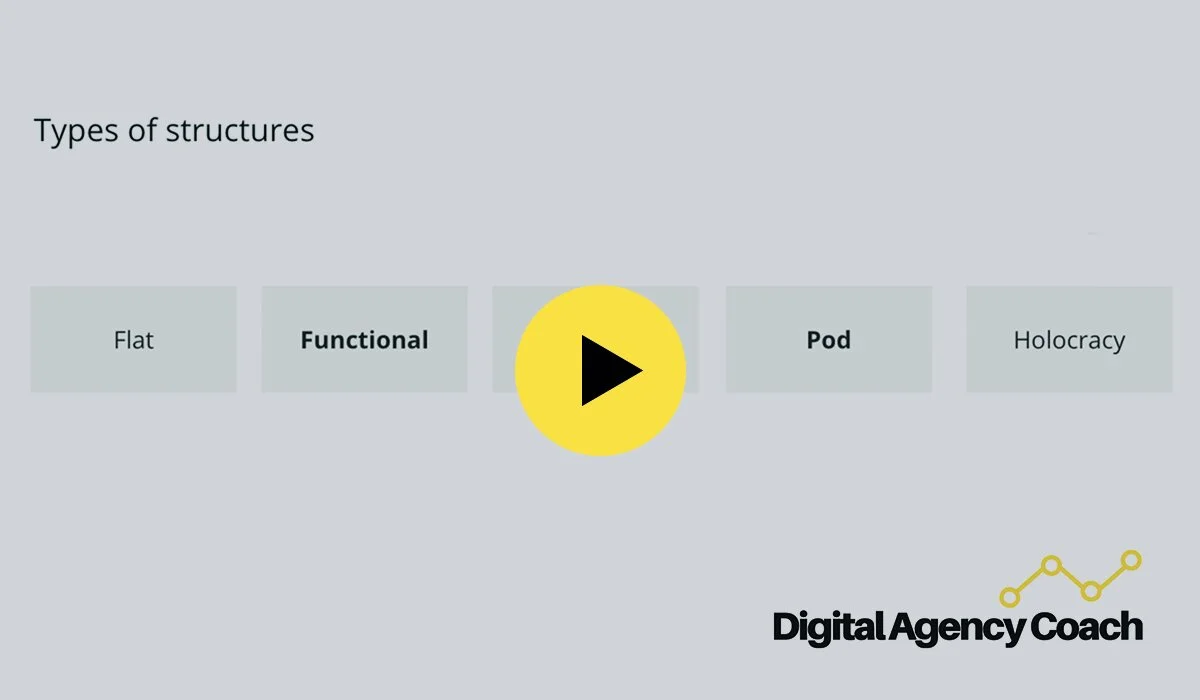What’s The Best Organisational Structure For My Agency?
Structure is key to growing your digital agency. Whether your agency is brand new or has 100 employees, the structure has a direct impact on the company's efficiency, culture, client satisfaction, and scalability. Without a considered organisational structure in place, many agencies suffer from poor communication and frustrated team members and clients.
So, what are your options when it comes to structuring or restructuring your agency? How do you know which structure is going to guarantee both employee and customer satisfaction and give you the permission to scale your marketing agency?
Typically, There Are Five Organisational Structures Available To Digital Agencies:
1. Flat
A flat team structure is super common in the smaller agencies and start ups. A flat structure will have only a few layers, if any at all, between management and employees. Flat organisations usually require team members to ‘wear many hats’ and as such, often produce a lot of generalists but no specialists.
2. Functional
Then we have functional structures - where teams are organised into the services that the agency provides. For example, a typical digital agency could have a PPC Team, a Social Media Team and an SEO Team, and so on.
A functional organisational structure concentrates the knowledge and expertise within those services, but this structure falls down when clients require more than one service from the agency, forcing disjointed communication between executives within each team. As the agency grows, communication and coordination between these teams becomes more and more convoluted and scaling suddenly becomes clunky and difficult.
3. Matrix
A matrix-based organisational structure is quite similar to a functional one, however with added levels of management weaved into the mix. This structure involves team members, such as account managers, coordinating and communicating side-ways into other functions, and thus creating a matrix. Again, the matrix structure is limited to a team of a certain size, as the complex web of communication can be difficult to scale.
4. Holacracy
Typically, a holacracy organisational structure is where there are no assigned roles and employees are given the flexibility to take on any task and move between teams freely. A holacracy can work well within some organisations, but broadly speaking, this team structure is a poor fit for a digital agency where specialisms and expertise is essential.
5. Pods
A pod structure is where a digital agency organises its teams by service area or client category, rather than agency function. A pod organisational structure creates specialist teams, which function as a sports team. For example, each ‘Pod’ would have a PPC expert, an SEO specialist, and a Social Media manager and this particular pod would service a specialist area or type of client.
Why Is A Pod Organisational Structure Best For My Digital Agency?
A pod team structure allows your agency to be better at servicing each client area. This means you can really lean into your niche and achieve a deeper level of industry or sector expertise across each pod.
Pod structures also have no dependencies on outside teams or require any need for a complex communication web. This creates less friction and makes for better workflows within teams, producing an enriched client experience at the other end.
Furthermore, a pod structure forces accountability within team members. As employees are being regularly challenged by exciting projects within their specialism, they are likely to have increased job satisfaction levels.
Maintaining A High Level Of Expertise Within Your Pods
Maintaining a level of expertise within a pod organisational structure is simple and easy to manage. At Digital Agency Coach, we recommend arranging weekly or bi-weekly workshop, hosted by a technical lead or specialist to chat about strategy, process improvement and professional development with the experts from each pod.
Regularly hosting these casual, friendly and engaging workshops with team members with the same skill set promotes an easy and productive conversation with relevant learning and take-homes for each attendee.
Final Thoughts
Restructuring your digital agency won’t come without some growing pains and a little disruption in the early days. But once the hard work is done and foundations are laid, growing and scaling your agency is simply a matter of creating a new pod - think of it as copy and paste.
If you are a multi-service agency and your clients are purchasing multiple products or services from you, this brilliant organisational structure works well to eliminate the web of communication and complexity, just as well whether you have a team of 30 or 300.
Watch: A detailed look at Functional Structures Vs Pods (4min)


